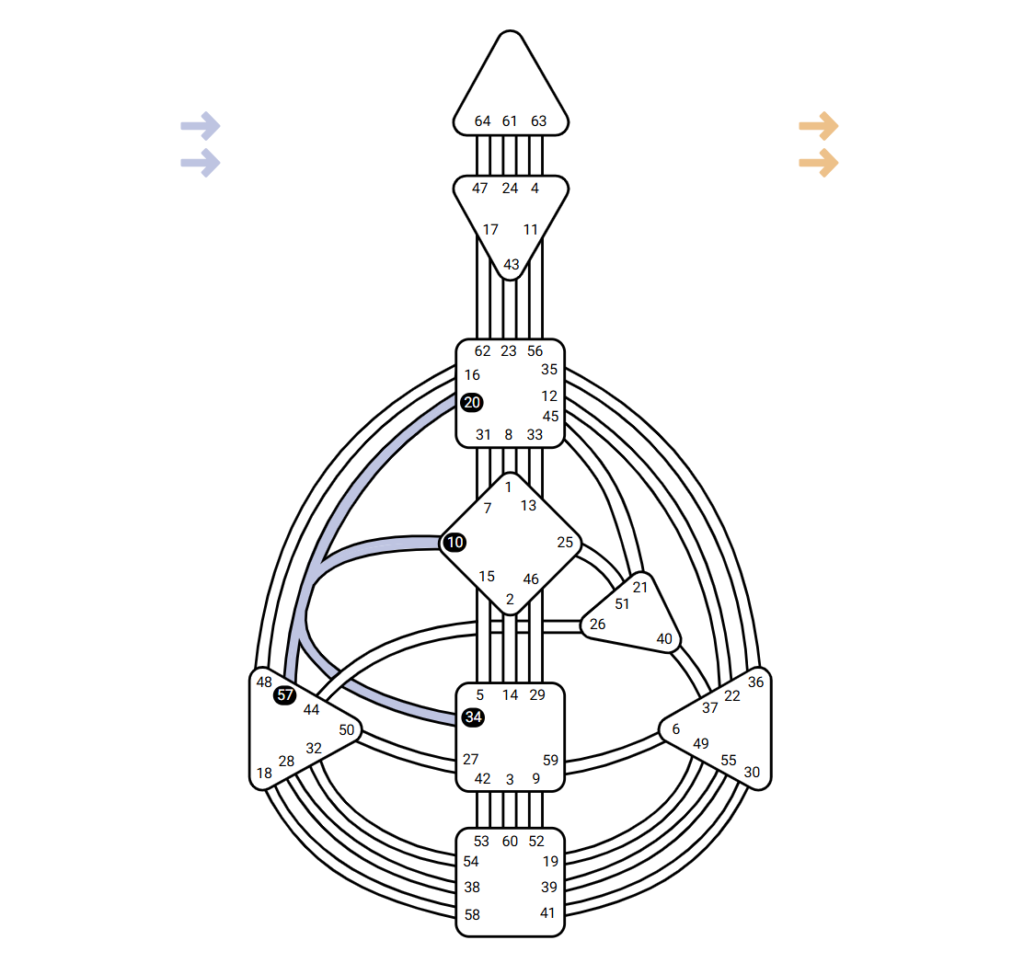Human Design contains several layers that describe our individual physical and energetic traits. One of these layers is the Centers. Since Human Design is a synthesis and extension of existing self-awareness systems, it provides an opportunity to explore new and unique meanings of a person’s energetic Centers.
Human Design has not only brought us knowledge about the “functioning” mechanisms of humans, but also of all living organisms. Every living being has its own energetic Centers. Through evolution and the development of consciousness, new energetic Centers have emerged. Up until 1781, humans had seven energetic Centers (similar to the chakra system in Hindu and Buddhist traditions). Since 1781, we have nine energetic Centers.
Each Center represents a specific aspect of our life, our energetic structure, and our personality. Depending on whether a given Center is defined or undefined (i.e., open), we function in a way unique to ourselves. When Centers are defined, they are characterized by a consistent, fixed energy and way of functioning. When they are undefined, they are characterized by a variable way of operating. We become open to the energy, actions, and conditioning of other people. This “openness” allows us to experience how others function, how they act, and what they feel.
Understanding the function and role of the Centers provides insight into our behavior, personality traits, and life experiences—both those that are aligned with our true self (defined Centers, channels, and Gates) and those that relate to our “false self” (undefined, open Centers, channels, and Gates influenced by the energy and “truths” of others).
If we consider the influences, energies, dependencies, and conditioning from others as “our own,” we are living an inauthentic life.
We feel something is missing from our lives, experience emptiness, and are not happy or fulfilled (refer to the entry on conditioning and the true and false self).
Getting to Know Others. Their True Self.
Recognizing the Centers of those close to us is key to understanding their behavior. It serves as a powerful tool for building healthy relationships (refer to the entry on using Human Design for building relationships).
Here’s a brief overview of each Center in Human Design:
Head Center (Crown)
- Function: Inspiration, mental pressure, posing questions, innovative ideas, new paradigms.
- Defined Center: Consistent access to inspiration, but may have difficulty distinguishing between what’s worth contemplating and what’s not.
- Undefined Center: Vulnerable to the influence of others’ ideas, concepts, and “truths.” You might focus on matters that aren’t important to you.
Ajna Center
- Function: Processing and analyzing information, forming conclusions, opinions, analysis.
- Defined Center: A consistent and coherent way of thinking and processing information.
- Undefined Center: Flexible thinking, but you might be indecisive or influenced by others’ opinions.
Throat Center
- Function: Communication, speaking, writing, acting, creating; this is the “manifestation” point for all other Centers.
- Defined: Consistent and potentially strong influence on others; clear communication and action.
- Undefined: Variable or inconsistent expression and communication; you may have trouble being heard.
G Center (Identity Center)
- Function: Identity, direction, and love.
- Defined: Consistent sense of self, place, and role in life; clear direction in life.
- Undefined: Flexible identity; you might take on different roles but may lack a strong sense of personal direction or life purpose.
Heart Center (Ego)
- Function: Willpower, ego; drive toward the material world.
- Defined: Strong willpower, consistent drive to prove oneself or validate oneself.
- Undefined: Inconsistent willpower; lack of self-worth. You may try to prove your value and overburden yourself to gain recognition from others.
Solar Plexus Center
- Function: Emotional waves, feelings, and desires.
- Defined: Emotional being with consistent strong emotional waves, frequent “ups and downs.”
- Undefined: Absorbs and amplifies others’ emotions; you may have difficulty distinguishing your feelings from others’. Fear of truth and confrontation with others may arise.
Sacral Center
- Function: Life force energy, sexuality, work, effort.
- Defined: Consistent access to strong life energy; a need for work, building, creating, achieving (Generators and Manifesting Generators).
- Undefined: Lack of consistent internal energy; need for wise energy management and avoiding burnout. You may not know when to say “enough.”
Spleen Center
- Function: Survival instinct, intuition, and health.
- Defined: Consistent access to intuition and a sense of well-being.
- Undefined: Inconsistent access to intuition; you might hold onto things (relationships, activities) longer than necessary due to uncertainty and fear.
Root Center
- Function: Stress, pressure to act, adrenaline.
- Defined: A consistent way of handling stress and pressure.
- Undefined: Fluctuating stress levels; you may feel continuous pressure from external demands.
In Human Design, the functioning of the Centers is one of the fundamental aspects of self-awareness. It allows us to discern whether we are living based on our true self or have been conditioned by others. Whether a Center is defined or undefined shapes an individual’s experiences and traits, influencing how they interact with the world and experience various aspects of their life.
Each Center is additionally defined by Channels and Gates, which add another layer of self-awareness. Understanding how our Centers function, just like our Type, Profile, Strategy, and Authority, is one of the essential elements of the self-discovery journey.
